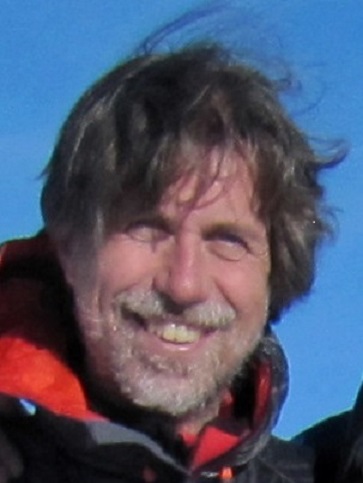 \
\
List of publications (ordered by number of citations)
Brief CV
Physics activities
ALICE
The ALICE experiment studies Pb-Pb, p-Pb and pp collisions at the CERN LHC. The aim is to study the properties of the Quark-Gluon Plasma (QGP), a state of matter produced in nuclear collisions, where quarks and gluons are no more confined inside hadrons. The apparatus includes a central barrel, with several detectors for tracking and particle identification, and a forward muon arm (2.5<η<4). It is completed by two sets of Zero-Degree calorimeters, at ~115m from the interaction point, for the measurement of the centrality of the collision.
My main physics interest is the study of quarkonium production and suppression in nuclear collisions. Due to the screening of the color force in a QGP, the quarkonium states are suppressed, with the suppression being stronger for the more loosely bound states. ALICE has measured the production of the J/ψ, ψ(2S), ϒ(1S), ϒ(2S), ϒ(3S) states. All these resonances were indeed found to be suppressed in Pb-Pb with respect to pp collisions. However, the charmonium states J/ψ and ψ(2S) are less suppressed with respect to lower energy experiments, an observation that has been interpreted in terms of "recombination" of quark-antiquark pairs in the QGP.
Since August 2014, I am the chairman of the ALICE Editorial Board, together with Constantin Loizides. I am also ex-officio member of the Physics Board, the Management Board and the Collaboration Board.
My previous appointments for activities directly related to ALICE were:
2012-2014 convener of the Physics Working Group on Dileptons and Quarkonia (PWG-DQ)
2009-2011 member of the ALICE Conference Committee
2010-now: coordinator/member of 7 Paper Committees, member of 5 Internal Review Committees, for publications of the ALICE experiment.
2006-2010: coordinator of the analysis group "Event Characterization" for the ALICE experiment
2002-2012: local coordinator (Torino) for the ALICE/GRID subgroup (INFN group III), for computing activities in the ALICE experiment.
2002-2009: member of the Computing Board of the ALICE experiment.
2002-2006: editor of the Physics Performance Report (PPR) of the ALICE experiment.
Here a summary of the previous experiments I have participated in
NA60
The NA60
experiment was a fixed-target experiment which studied
muon pair production in p-A and In-In collisions at the CERN
SPS. It took data in 2003-2004. It was an upgrade of the
existing NA50 set-up, with the addition of a vertex telescope
based on Si pixel detectors. Its physics program included the
study of low-mass resonances (ρ,ω,φ), of thermal dimuons (in the
mass region 1.5<m<2.5 GeV/c2), and of the J/ψ meson.
Among its main results, (i) a strong modification of the width of the ρ-meson in In-In collision, with no shift in mass, (ii) an excess of dimuon production in the region between the φ and the J/ψ, ascribed to thermal dimuon production with a temperature T = 205 ± 12 MeV, (iii) a suppression of the J/ψ in In-In compatible with that expected in cold nuclear matter, contrary to what happens for the collision of the (heavier) Pb-nuclei.
My appointments for activities
directly related to NA60 were:
2002-2010: Physics Coordinator
2002-2007: leader of the Zero Degree Project (ZDC).
2002-2007: national coordinator for
the IPER group (INFN group III), for the funding requests
relative to the CERN NA50/NA60 experiments.
NA50
The NA50 experiment was a fixed-target experiment which studied muon pair production in p-A and Pb-Pb collisions at the CERN SPS. It took data between 1994 and 2000. It was composed of a muon spectrometer, complemented with a Si-strip detector for the measurement of the charged hadron multiplicity, an electromagnetic calorimeter and a ZDC (quartz fiber calorimeter) for the measurement of projectile spectator nuclei.
Its main result was the discovery of the "anomalous" J/ψ suppression, one of the signature of the formation of a QGP in ultrarelativistic heavy-ion collisions. Among the other important results, an excess of muon pair production in the "intermediate" mass region was found, compatible with both thermal dimuons or an enhancement of semi-leptonic decays of open charm production.
I was active both in the design,
prototyping and construction of the ZDC,
and then in the analysis of the J/ψ and open charm production. I was also
coordinator of CERN computing activities (1997-2001), and
Group Leader in Matter of Safety (GLIMOS, 1997-2001)
HELIOS-3
The HELIOS-3
experiment was an upgrade of the HELIOS-2 experiment,
devoted to the study of muon pair production in p-A and S-U
collisions at the CERN SPS. It took data in 1991.
Its main result was the detection of an enhancement of the φ-meson production in nuclear collisions compared to p-A, and the establishment of an excess in the mass region between the φ and the J/ψ. My main contribution was the construction, test and installation of a large scintillator hodoscope (H1) for muon triggering
PINOT
I started my career as a physicist in
an experiment on nuclear physics at intermediate energies. It
was carried out at the SATURNE spectrometer in Saclay. The name
of the experiment was PINOT (LNS237) and it studied η production in pp
and pA collisions close to threshold (1988-1995). I defended my
PhD thesis "La produzione di η
in collisioni protone-protone e protone-nucleo in prossimita'
della soglia" in 1993.
Copyright © 2015 by E.S.
